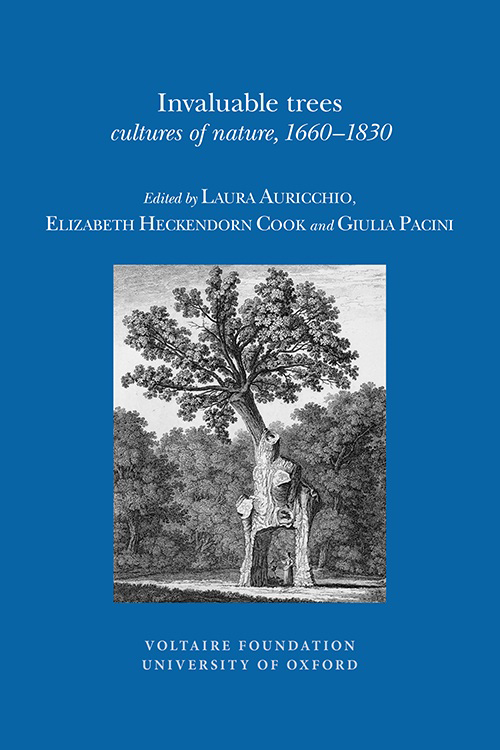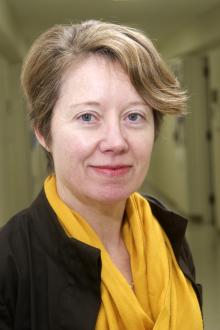

You wouldn't want to miss the forest for its trees if you're worried about woods at large, but what if the trees themselves are your central concern? Such is the case with an arboreal literary scholar at UC Santa Barbara, whose new book gives trees a starring role in its examination of the evolving relationship between people and nature in the 18th century.
Elizabeth Heckendorn Cook, an associate professor of English at UCSB, collaborated with Laura Auricchio, an associate professor of art history at The New School, and Giulia Pacini, an associate professor of French at the College of William & Mary, to co-edit the new compilation, "Invaluable trees: cultures of nature, 1660–1830." Cook also contributed an essay to the volume, described as an exploration of how and why trees, forests, and wood mattered in the time period known as "the long eighteenth century."
"It was a world of wood in ways that we just don't get today," said Cook, part of a research cluster in literature and the environment. "There was an unimaginable dependence of human beings on wood as a resource, and it was that aspect of the relationship between trees and humans that we wanted to focus on. We acknowledge the tree as a powerful metaphor and symbol –– trees of liberty, trees as religious, trees as anthropological –– but how people actually interacted with trees produced a really interesting collection of essays for us."
The desire to detail that interplay inspired Cook and her co-editors to solicit essays from historians of literature, art, and science to illuminate the ways people were thinking about trees and treating trees differently than they had before. For instance, the 18th century emergence of tree-lined promenades, as acknowledgement of how trees impact human health inspired urban planners to start introducing trees into cityscapes.
"At the same time, we see people begin to interact with trees –– our claim is –– in new ways and more consistently than in the past," Cook said. "Ordinary people are going on walking tours, going into forests and drawing trees, and thinking about their relation to trees. You have trees in landscape art being depicted in new ways, and people bringing trees into their homes via conversation pieces –– a type of portrait that depicts families informally, often outdoors. You have families chatting under the elms in public parks and gardens, and going on tree-gazing tours to admire beautiful trees. And then there is the phenomenon of named trees."
Take the Greendale Oak, once described as "the Methuselah of trees" for its purported age, whose size spawned a bet between two aristocrats. The owner of the tree bragged to a friend that the oak was large enough to drive through; he had it hacked through the middle to prove it and win the wager. According to Cook, the Greendale Oak –– a rendering of which appears on the book's cover –– still stands on a piece of private property in the U.K., and remains renowned among tree fanciers.
This then-newfound affection for trees still reverberates today, Cook argued, pointing to the ever-louder drumbeat for sustainability and environmental management. Prime example: the emergence of so-called "ecosystem services," in which trees are valuated in order to be protected, enabling oversight agencies to charge countries who cut down too many trees, or incentivize those who better protect their forests.
"There is a musicologist who writes about how people in a region of Italy were managing the forests used to make Stradivarius violins, how local communities regulated their own forests in line with what we today would see as appropriate management practices," Cook said. "That goes against the idea that the ecological mindset and notion of environmental management only emerged in the 20th century. We can see that's not true. There's a history of people thinking not only about profit and tree cultivation, but also about their ethical relation to the landscape. For me, it's all very connected to issues we have to resolve today."
Such topics are under consideration –– and provide inspiration –– to Cook and her colleagues, as well as their students, in the Literature and the Environment research cluster housed at the Department of English. Available as a specialization for both undergraduate and graduate English students, it is an emerging area of faculty study that aspires to inform new ways of thinking about the environment. Looking back at environmental literature in hopes of moving the craft forward –– and crafting the future of the sustainability movement –– UCSB-based experts in the subject see it as a unique means of envisioning solutions.
"We hope to build an understanding of the ideas and narrative we have about the environment, and enable people to create new kinds of stories about the environment … to imagine a manner of things that doesn't exist in the world we live in, but one day might," said Teresa Shewry, an assistant professor and the cluster's current director, who is among co-organizers of an upcoming interdisciplinary seminar on sea change. "There are areas of inquiry into the world we live in to which the humanities can bring discussions about the environment. In teaching, that's an area where you can see an impact –– by giving students a way toward different narratives, and giving them more possibilities in their thinking."
Related Links



